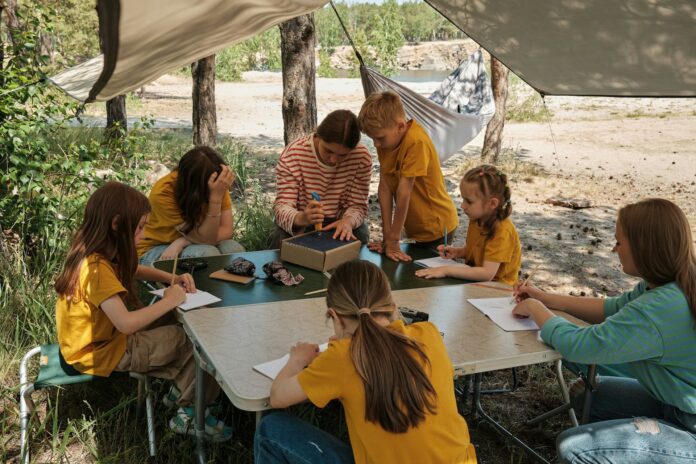Building a high-performing team requires more than just assigning tasks; it demands fostering genuine connections, nurturing trust, and enhancing collaborative skills. While traditional trust falls and icebreaker quizzes have their place, modern businesses thrive when team-building activities are fresh, engaging, and directly address the nuanced dynamics of modern work.
With all that in mind, here are 7 unique team-building exercises that go beyond the mundane to inject energy, boost morale, and significantly sharpen collaboration within your organisation.
The Escape Room With A Twist: The ‘Escape The Office’ Challenge
Escape rooms are popular with companies looking to enhance collaboration, but their standard format can sometimes feel disconnected from daily work challenges. To make it unique, tailor the puzzles to your company’s history, recent projects, or industry jargon.
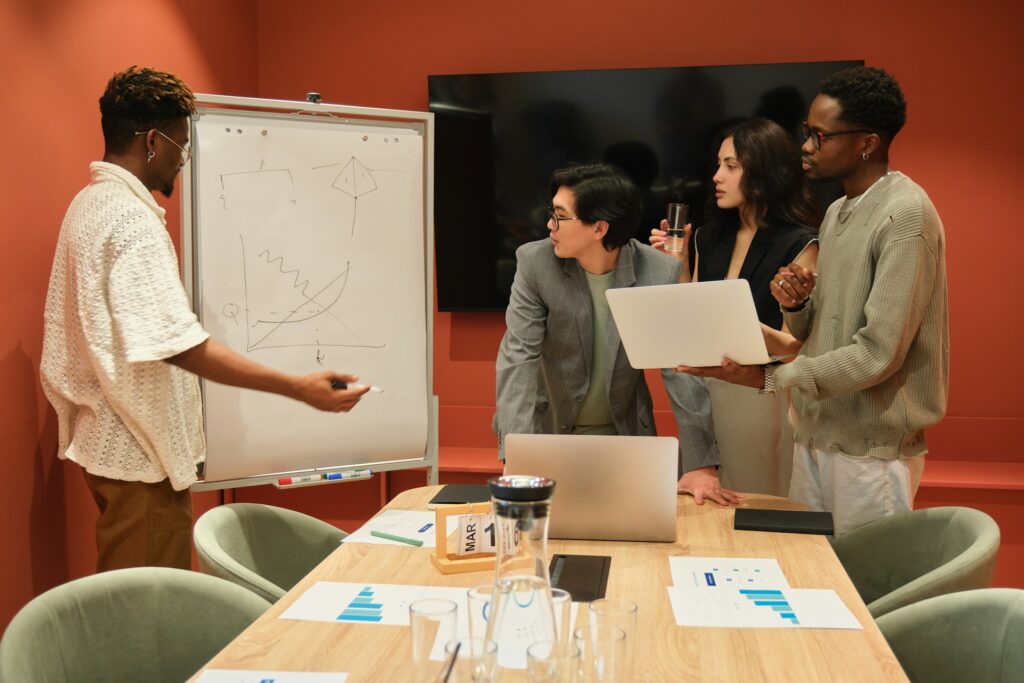
The Concept
Instead of a generic theme, design an ‘Escape the Office’ scenario. The premise could be that a critical project file has been encrypted by a fictional rival company, and the only way to unlock it before a major deadline is by solving a series of five interconnected puzzles hidden around the actual office space.
Collaboration Focus
This exercise forces real-time problem-solving under pressure. Team members must delegate roles based on their perceived strengths (e.g., the detail-oriented person handles the cryptic text puzzle, the logical thinker tackles the sequence puzzle). Success hinges on clear communication – no single person can see all the clues simultaneously.
Morale Boost
The shared sense of accomplishment upon ‘saving the day’ (i.e., solving the final puzzle) releases significant positive energy. It reframes challenging work situations as solvable if the team pools its collective knowledge.
The ‘Blind Build’ Challenge: Marshmallow Tower Reimagined
The classic Marshmallow and Spaghetti Tower exercise tests basic planning, but the ‘Blind Build’ adds a crucial layer of communication reliance.
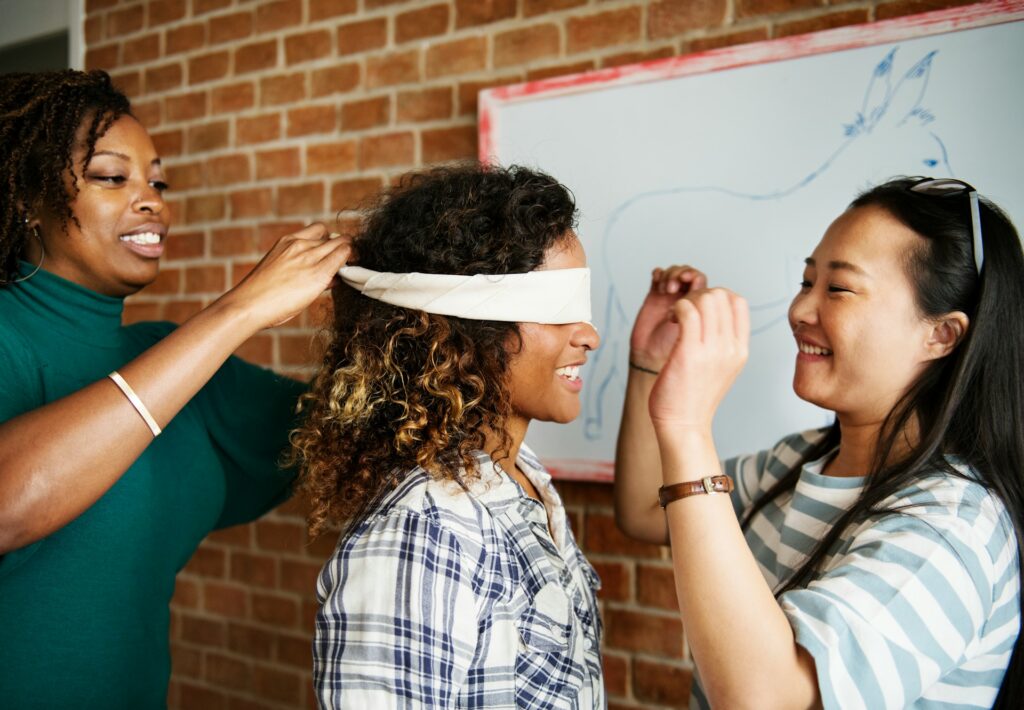
The Concept
Divide the group into pairs or small teams. One person is the ‘Architect’ and is shown a model structure (perhaps built from LEGO or simple blocks) they must replicate. The Architect is blindfolded. The other team members are the ‘Communicators’ and can see the model and the materials, but cannot touch the materials or the structure being built. They can only verbally instruct the blindfolded Architect on how to assemble the pieces.
Collaboration Focus
This is a pure test of verbal precision and active listening. The Communicators must translate a visual concept into actionable, unambiguous steps, while the Architect must trust their input implicitly and provide feedback on what they feel/hear. It powerfully demonstrates the friction caused by vague instructions and highlights the importance of clear feedback loops.
Morale Boost
It is often hilarious, especially when the inevitable structural collapse occurs. The low-stakes environment encourages laughter and resilience, turning initial frustration into shared amusement.
The Corporate Cookbook: Sharing Culinary Legacies
This exercise taps into personal history, which is excellent for building deeper interpersonal bonds beyond job titles.

The Concept
Ask every team member to contribute one favourite recipe that holds personal significance – perhaps a dish their grandmother taught them, a meal they cook to de-stress, or a recipe linked to a major life event. Compile these into a beautifully designed digital or printed ‘Team Cookbook’. Host a dedicated session where two or three volunteers cook their recipe (or a simplified version) in the office kitchen (if available) or simply present the story behind the dish.
Collaboration Focus
While not directly about project collaboration, this fosters empathy and psychological safety. Understanding colleagues’ personal stories and traditions breaks down professional barriers, leading to more open and trusting collaboration on work tasks later on.
Morale Boost
It showcases the diversity and humanity within the team. Receiving a tangible (and tasty!) keepsake like the cookbook boosts the feeling that the company values the whole person, not just their output.
High-Octane Synergy: The Grand Prix Experience
Sometimes, the best way to foster intense, focused collaboration is through an adrenaline-pumping, shared, competitive experience that requires immediate strategic thinking. This is where F1 driving simulator hire comes into its own.

The Concept
Organise an afternoon where teams compete in a series of races using professional-grade F1 driving simulators. Teams aren’t judged just on the fastest single lap, but on their Pit Stop Strategy Score.
Before the race, teams must strategise: which driver runs which stint, when do they make their mandatory ‘pit stop’ (where team members must quickly swap drivers and maybe complete a small, unrelated, quick task like solving a two-piece jigsaw puzzle before the next driver can go), and who handles communication.
Collaboration Focus
This requires rapid cross-functional planning and delegation under extreme time pressure, mimicking high-stakes project management. The team must agree on a unified strategy, commit to it, and then adapt instantly when a competitor overtakes or a simulation penalty is applied.
Morale Boost
The competitive spirit, coupled with the sheer fun and novelty of operating a racing simulator, creates massive spikes in engagement and provides fantastic, shared bragging rights afterwards.
The ‘What If…?’ Scenario Workshop
This exercise shifts focus from what is to what if, leveraging creativity to build robust contingency planning skills.
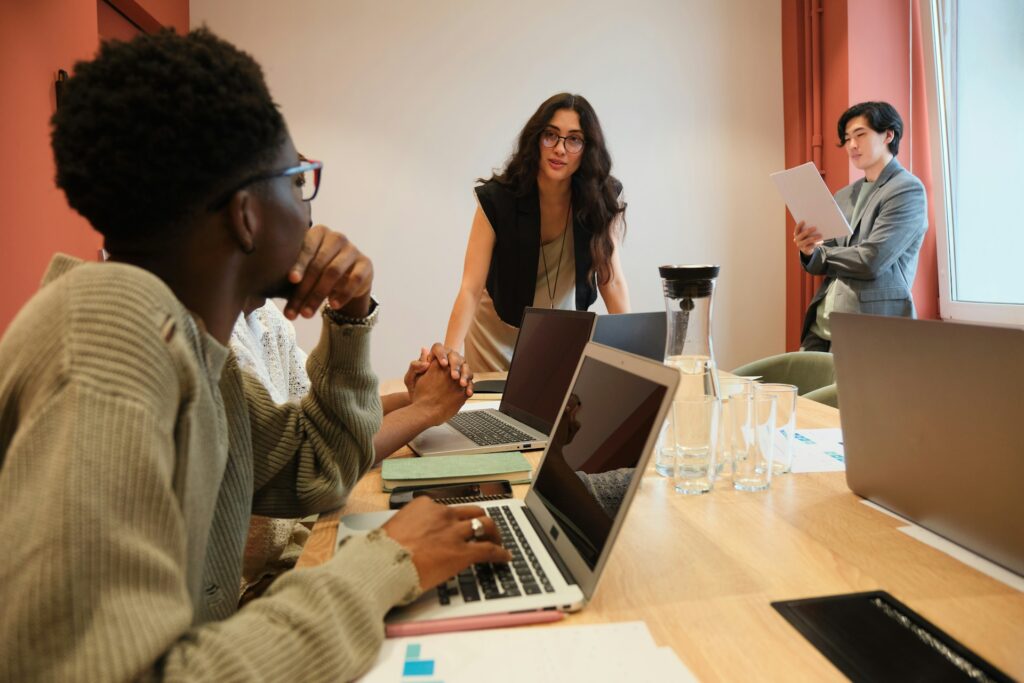
The Concept
Present the team with a series of extreme, yet plausible, hypothetical work disasters. Examples: ‘Our main server crashes five minutes before the biggest client presentation,’ or ‘The lead developer suddenly resigns mid-sprint,’ or ‘All external communication channels (email/Slack) are down for 24 hours.’ Teams must map out a step-by-step recovery and communication plan within a tight timeframe (e.g., 45 minutes).
Collaboration Focus
This activity demands structured consensus-building and risk assessment. It forces quieter team members to voice potential pitfalls they might otherwise keep to themselves, ensuring all angles of a potential crisis are covered collaboratively, rather than being siloed in one department’s response.
Morale Boost
Facing abstract fears in a safe environment reduces anxiety about real-life crises. The team leaves feeling prepared and confident in their collective ability to navigate chaos, which is a huge morale booster.
The Human Knot: Advanced Intricacy
The standard ‘Human Knot’ involves standing in a circle and grasping two different hands. The ‘Advanced Intricacy’ version adds layers of complexity.
The Concept
Form groups of 8-12 people. When they form the knot, introduce a secondary constraint. For example, only people wearing blue shirts can speak, or the team must solve the knot while only moving their legs (no lifting feet), or they must communicate only through humming tunes.
Collaboration Focus
This tests adaptability and non-verbal communication. The initial knot is a spatial problem; the constraint is a communication problem. It forces the team to quickly innovate new ways to convey direction and intent when their primary methods are restricted, mirroring times when tools fail or priorities clash.
Morale Boost
The sheer physical comedy of a complex knot combined with the strange communication rule fosters deep bonding through shared, slightly awkward, physical effort.
The Reverse Mentoring Session: Skill Swap Day
Reverse mentoring flips the traditional hierarchy, allowing junior or newer staff to teach senior leaders a skill.
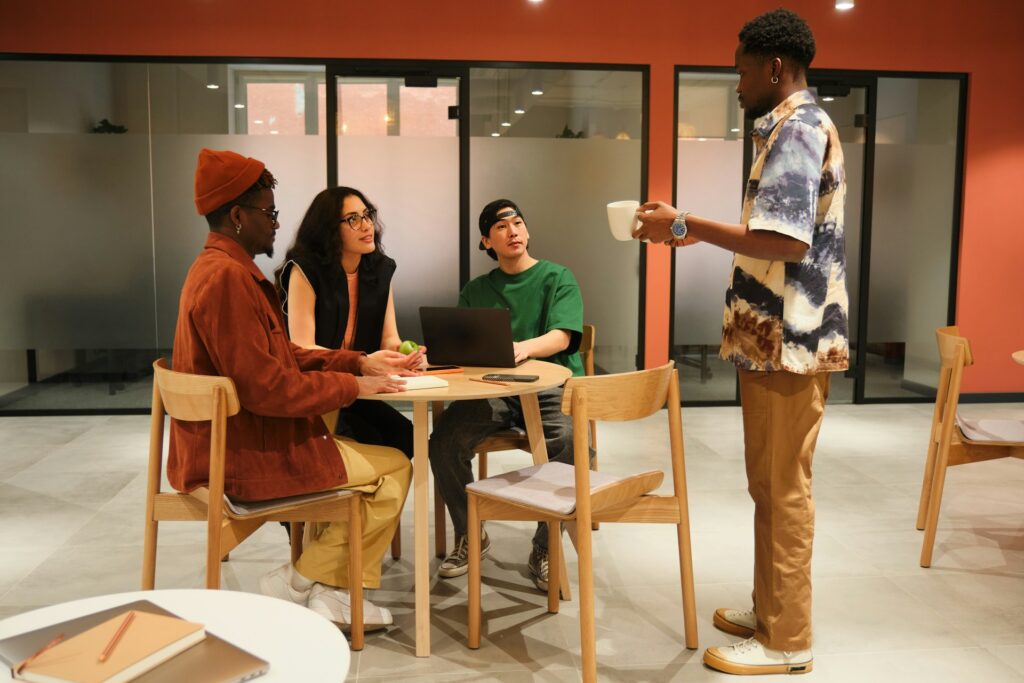
The Concept
Identify a skill where junior staff often excel or are more current than senior staff – this is usually technology-based (e.g., mastering a new social media platform, advanced spreadsheet functions, using a new AI tool) or a cultural insight. Pair senior leaders with junior colleagues as their personal ‘tutor’ for one hour. The junior person leads the session entirely.
Collaboration Focus
This exercise builds mutual respect and breaks down perceived status barriers. Senior leaders must adopt a posture of humble learning, which builds trust with their direct reports. Junior members gain confidence by realising their expertise is valued at the highest levels.
Morale Boost
It is an immense confidence boost for the junior staff and a refreshing learning opportunity for the veterans, resulting in a more egalitarian and appreciative team atmosphere.
The Bottom Line
True team building isn’t just about having fun; it is about creating shared, memorable experiences that forge stronger relational pathways. By integrating novel, targeted exercises – from the focused adrenaline of the racing simulator to the personal sharing of a cookbook – you move beyond obligation and foster a company culture where collaboration feels natural, morale remains high, and every team member feels valued and understood.




